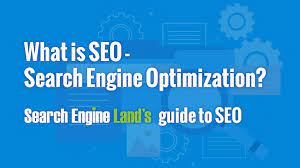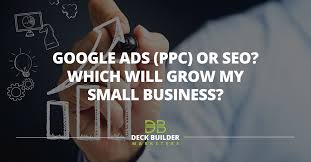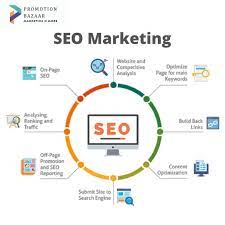Unlocking Success: The Essential Guide to Search Engine Optimization Business Strategies
The Power of Search Engine Optimization Business
In today’s digital age, having a strong online presence is crucial for the success of any business. One of the key strategies that businesses employ to enhance their visibility on the web is search engine optimization (SEO). An SEO business plays a vital role in helping companies improve their search engine rankings and attract more organic traffic to their websites.
What is SEO Business?
An SEO business specialises in optimising websites to rank higher in search engine results pages (SERPs). By implementing various techniques such as keyword research, on-page optimization, link building, and content creation, an SEO business helps businesses improve their online visibility and reach their target audience effectively.
The Benefits of Hiring an SEO Business
There are several benefits to enlisting the services of an SEO business. Firstly, an experienced SEO team can provide valuable insights into your website’s performance and suggest strategies for improvement. By targeting relevant keywords and creating high-quality content, an SEO business can help drive organic traffic to your site and increase conversions.
Moreover, working with an SEO business saves you time and resources that would otherwise be spent on learning and implementing complex SEO techniques. With their expertise and industry knowledge, an SEO business can deliver results more efficiently, allowing you to focus on other aspects of your business.
Choosing the Right SEO Business
When selecting an SEO business for your company, it’s essential to consider factors such as experience, reputation, and proven results. Look for a company that has a track record of success in improving search engine rankings for businesses similar to yours. Additionally, ensure that the SEO business follows ethical practices and stays updated with the latest algorithm changes to deliver sustainable results.
Conclusion
Investing in search engine optimization is a wise decision for any business looking to establish a strong online presence. By partnering with a reputable SEO business, you can boost your website’s visibility, attract more organic traffic, and ultimately grow your business in the competitive digital landscape.
Top 8 Essential Tips for Enhancing Your SEO Business Success
- Perform keyword research to target relevant search terms.
- Optimize on-page elements like title tags, meta descriptions, and headings.
- Create high-quality, engaging content that is valuable to your audience.
- Build backlinks from reputable websites to improve your site’s authority.
- Ensure your website is mobile-friendly for better user experience and search rankings.
- Monitor and analyse your website’s performance using tools like Google Analytics.
- Regularly update and refresh your content to keep it relevant and up-to-date.
- Stay updated with the latest SEO trends and algorithm changes to adapt your strategies accordingly.
Perform keyword research to target relevant search terms.
Performing thorough keyword research is a fundamental aspect of any successful search engine optimization business strategy. By identifying and targeting relevant search terms that align with your business niche, products, or services, you can increase the visibility of your website in search engine results pages. Understanding the language and phrases that your target audience uses when searching online allows you to create tailored content that resonates with potential customers and drives organic traffic to your site. Effective keyword research lays the foundation for a strong SEO campaign that enhances your online presence and maximises your reach in the digital landscape.
Optimize on-page elements like title tags, meta descriptions, and headings.
To enhance your search engine optimization efforts, it is crucial to optimise on-page elements such as title tags, meta descriptions, and headings. These elements play a significant role in communicating the relevance and content of your web pages to search engines. By crafting compelling and keyword-rich title tags, informative meta descriptions, and well-structured headings, you not only improve your website’s visibility in search results but also enhance user experience by providing clear and concise information about your content. Prioritising the optimisation of these on-page elements is key to boosting your website’s organic traffic and overall search engine rankings.
Create high-quality, engaging content that is valuable to your audience.
Creating high-quality, engaging content that provides value to your audience is a fundamental tip for any search engine optimization business. By crafting content that is informative, relevant, and engaging, businesses can not only attract the attention of their target audience but also establish credibility and authority in their industry. Valuable content not only helps improve search engine rankings but also fosters stronger relationships with customers, leading to increased brand loyalty and conversions. In essence, focusing on creating quality content is key to driving organic traffic and achieving long-term success in the competitive online landscape.
Build backlinks from reputable websites to improve your site’s authority.
Building backlinks from reputable websites is a crucial strategy in enhancing your site’s authority and credibility in the eyes of search engines. By acquiring links from high-quality and trustworthy sources, you signal to search engines that your website is a valuable resource worth ranking higher in search results. These backlinks act as endorsements for your content, helping to establish your site as an authoritative source within your industry. As a result, investing time and effort into building quality backlinks can significantly boost your SEO efforts and contribute to the long-term success of your online presence.
Ensure your website is mobile-friendly for better user experience and search rankings.
Ensuring that your website is mobile-friendly is a crucial aspect of search engine optimization for businesses. With the increasing use of mobile devices, having a responsive design that adapts to different screen sizes not only provides a better user experience but also positively impacts search rankings. Search engines like Google prioritise mobile-friendly websites in their rankings, making it essential for businesses to optimise their sites for mobile users. By focusing on creating a seamless experience across all devices, businesses can improve user engagement, increase traffic, and ultimately enhance their online visibility and success.
Monitor and analyse your website’s performance using tools like Google Analytics.
To enhance the effectiveness of your search engine optimization business, it is crucial to continuously monitor and analyse your website’s performance. Utilising tools such as Google Analytics provides valuable insights into your site’s traffic, user behaviour, and conversions. By tracking key metrics and trends, you can identify areas for improvement, measure the success of your SEO strategies, and make informed decisions to optimise your website for better search engine rankings. Regular monitoring and analysis with tools like Google Analytics empower you to refine your SEO approach and drive sustainable growth for your business online.
Regularly update and refresh your content to keep it relevant and up-to-date.
To maintain a competitive edge in the world of search engine optimization business, it is essential to regularly update and refresh your content. By keeping your content relevant and up-to-date, you not only cater to the evolving needs and interests of your target audience but also signal to search engines that your website is active and valuable. Fresh content not only engages visitors but also improves your chances of ranking higher in search results, ultimately driving more organic traffic to your site.
Stay updated with the latest SEO trends and algorithm changes to adapt your strategies accordingly.
To succeed in the competitive landscape of search engine optimization business, it is crucial to stay updated with the latest SEO trends and algorithm changes. By keeping abreast of industry developments, businesses can adapt their strategies effectively to meet the evolving demands of search engines. This proactive approach not only ensures that your website remains competitive in search engine rankings but also allows you to capitalise on new opportunities and stay ahead of the curve in the dynamic world of SEO.



